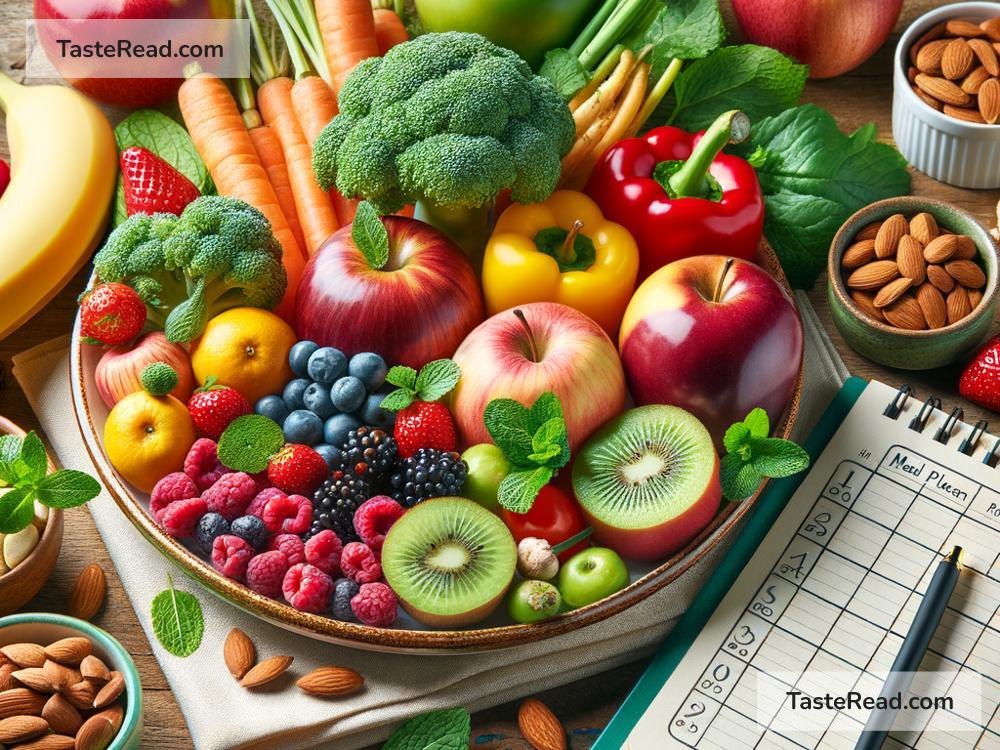How to Plan Meals for Optimal Flavonoid Intake
Eating healthy isn’t just about counting calories or avoiding junk food—it’s also about making sure you’re getting all the nutrients your body needs to thrive. One group of nutrients that often gets overlooked is flavonoids. These natural compounds, found in fruits, vegetables, and other plant-based foods, have amazing health benefits. Studies suggest flavonoids can help reduce inflammation, improve heart health, and boost your immune system. They may even offer protection against chronic diseases like diabetes and cancer!
If you’re wondering how to get more flavonoids into your diet, don’t worry—it’s easier than you think. In this article, we’ll walk you through everything you need to know to plan meals for optimal flavonoid intake. The best part? You don’t need drastic changes or fancy supplements. It’s all about choosing the right foods and combining them in delicious ways.
What Are Flavonoids?
Before we dive into meal planning, let’s quickly explain what flavonoids are. Flavonoids are a type of antioxidant found in plants. They’re responsible for the bright colors in foods like berries, citrus fruits, and leafy greens. Scientists have divided flavonoids into several subcategories, such as flavonols, flavanones, catechins, and anthocyanins. Each type offers unique health benefits, but overall, they help protect your cells from damage caused by oxidative stress.
Now, let’s move on to the fun part—how to pack your meals with these powerful nutrients!
Step 1: Focus on Flavonoid-Rich Foods
To optimize flavonoid intake, your diet should focus on plant-based foods that naturally contain these compounds. Below are some top sources of flavonoids:
- Berries: Blueberries, strawberries, raspberries, and blackberries are especially rich in anthocyanins.
- Citrus Fruits: Oranges, lemons, limes, and grapefruits contain flavanones.
- Leafy Greens: Spinach, kale, and parsley are packed with flavonols.
- Onions: Red and yellow onions are excellent sources.
- Green Tea: Loaded with catechins, green tea is a simple way to boost your flavonoid intake.
- Dark Chocolate: Look for varieties with 70% cocoa or higher—these are rich in flavonoids.
- Red Wine: In moderation, red wine provides flavonoids called resveratrol; just one glass for adults!
- Apples: These classic fruits contain flavonoids, especially in their skins.
- Beans: Black beans, kidney beans, and even soybeans can boost your flavonoid levels.
When planning meals, keep these foods in mind and aim for variety. Eating a colorful array of fruits and vegetables will ensure you’re getting a mix of different flavonoid types.
Step 2: Build Balanced Meals
Now that you know which foods are rich in flavonoids, it’s time to plan meals that bring everything together.
Breakfast Ideas
Start your day with a flavonoid boost! Here are a few ideas:
– Berry Smoothie Bowl: Blend frozen berries, spinach, and a splash of orange juice. Top with sliced apples and a sprinkle of granola.
– Green Tea & Oatmeal: Pair a steaming cup of green tea with oatmeal topped with chopped strawberries, raspberries, and a dollop of almond butter.
– Avocado Toast with Citrus Salad: Add a side salad of orange slices with fresh mint to your avocado toast. The citrus and mint bring in those flavonoids.
Lunch Ideas
Midday meals can be simple and packed with nutrients:
– Quinoa Salad: Mix quinoa, spinach, parsley, kidney beans, chopped onions, and a lemon-tahini dressing.
– Veggie Wrap: Fill a whole grain wrap with hummus, kale, shredded carrots, and sliced apples. Serve with iced green tea.
– Citrus Shrimp Bowl: Top brown rice with shrimp cooked in lemon juice, steamed broccoli, and avocado slices.
Dinner Ideas
Evenings are a great time to combine flavors and boost flavonoid intake:
– Baked Salmon with Kale and Citrus Glaze: Brush salmon with an orange glaze and serve with sautéed kale and quinoa.
– Veggie Stir-Fry: Combine tofu, red bell peppers, onions, broccoli, and bok choy in a ginger-soy sauce. Pair with a side of black beans.
– Dark Chocolate Dessert: Finish dinner with a small square of dark chocolate paired with fresh strawberries or raspberries.
Step 3: Incorporate Snacks and Drinks
Snacking can also be an opportunity to sneak in flavonoids:
– Enjoy an apple with almond butter as a mid-morning snack.
– Sip green tea or a homemade berry-infused water in the afternoon.
– Munch on dark chocolate chips or trail mix with dried blueberries during a movie night.
Step 4: Keep It Fresh and Fun
Eating for optimal flavonoid intake doesn’t have to be boring. Experiment with new recipes, try different cuisines, and shop for seasonal produce. The more variety you have in your diet, the better your chances of getting a wide range of flavonoids.
Practical Tips for Success
- Meal Prep: Wash and chop fruits and veggies ahead of time so they’re ready to grab and use during the week.
- Mix and Match: Try pairing flavonoid-rich foods together, like green tea with citrus salad or dark chocolate with berries.
- Shop Smart: Visit farmers’ markets for fresh, colorful produce when possible.
- Stay Hydrated: Drinks like green tea, black tea, and water infused with citrus make it easy to sip your flavonoids.
Conclusion
Planning meals for optimal flavonoid intake doesn’t have to be complicated. By focusing on flavonoid-rich foods like berries, citrus fruits, leafy greens, onions, green tea, and dark chocolate, you can boost your health without sacrificing taste. Build balanced meals, snack wisely, and don’t be afraid to get creative in the kitchen. Eating for health can be delicious, colorful, and fun!
Start small by adding one or two flavonoid-rich foods to your meals each day, and soon, it’ll become second nature. Your body—and your taste buds—will thank you. Happy eating!


